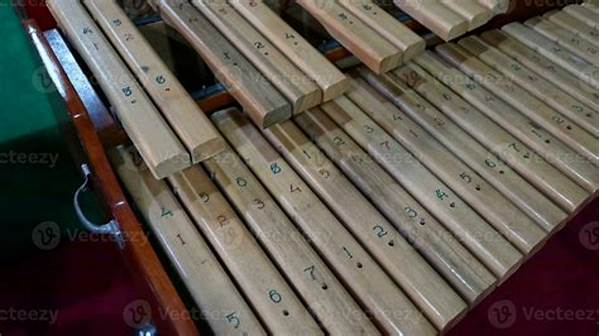In the heart of Indonesia, amidst its vibrant culture and rich traditions, there lies a lesser-known gem of an instrument: the Kolintang. Often overshadowed by its flashier counterparts like the gamelan, the Kolintang holds a special charm and a unique musical legacy that resonates with those who take the time to listen. Today, this cultural treasure is witnessing a revival in the most unexpected of places—modern schools. This resurgence is not just about preserving heritage; it’s about crafting a richer cultural identity for future generations.
Read More : Tips For Choosing The Best Digital Piano
Imagine walking into a classroom and instead of the usual buzz of chatter, you’re enveloped in the delightful tones of Kolintang music. Intrigued? That’s precisely what’s happening across Indonesia. Schools, both urban and rural, have begun to incorporate Kolintang into their music programs, sparking interest and bringing a fresh wave of cultural appreciation among students.
The Resurgence of Kolintang in Education
While past generations might have viewed the Kolintang as part of a bygone era, today’s educators see immense value in reintroducing traditional music into modern curriculums. The instrument’s distinct, melodic sound offers not only a musical experience but also an educational one. By learning to play the Kolintang, students acquire a deeper understanding of Indonesian culture and history.
Kolintang’s Unique Appeal
One might ask, “Why the Kolintang?” The answer lies in its versatility and the emotional depth it brings to music. Unlike many other traditional instruments, the Kolintang can seamlessly blend with various music styles. This adaptability makes it an excellent educational tool, capable of capturing the interest and imagination of young learners. It breaks the monotonous cycle of conventional classroom teaching by providing an interactive and engaging learning experience.
Building Desire for Cultural Roots
With increasing globalization, it’s easy for cultural identities to blur. However, the revival of the Kolintang in schools is reigniting a spark of cultural pride among Indonesian youth. By actively engaging with their musical heritage, students feel a connection to their ancestors—an invaluable bridge between the past and the present. This emotional bond fosters a desire to preserve and promote Indonesia’s traditional music.
Action and Promotion of Kolintang
The initiative to revive the Kolintang in schools goes beyond mere theory. It involves action—workshops, music classes, and school events—all designed to promote the instrument’s unique selling points. Educators, in collaboration with local musicians, are crafting programs that are as entertaining as they are informative. This approach not only teaches students how to play the instrument but also empowers them as ambassadors of their heritage.
How Schools Are Reviving Kolintang
The journey of reviving the Kolintang isn’t straightforward, but it’s a worthy pursuit. Here’s how schools are breathing new life into this traditional instrument:
An Exclusive Look into School Programs
Schools are not just introducing Kolintang as an elective; they are weaving it into the very fabric of their music education. Exclusive workshops feature seasoned Kolintang players demonstrating traditional techniques, while students are encouraged to innovate and create new compositions.
Edu-tainment: The Fun Side of Learning
The learning process involves fun and interactive methods. Music educators are using digital tools to create Kolintang tutorials accessible to students everywhere. Shouldn’t education be both educational and entertaining?
Read More : Review Of A Resonator Guitar For Classical Blues
Detailed Exploration of Kolintang’s Revival
The revival of the Kolintang in modern schools represents a broader cultural renaissance happening in Indonesia. Let’s delve deeper into how and why this movement is gaining momentum.
Real Stories from Schools
Here are a few testimonials from schools where Kolintang has made a significant impact:
The Impact and Potential of Kolintang in Schools
The impact of reviving the Kolintang extends beyond music education; it touches upon identity, community, and the arts. By embedding this instrument in schools, a foundation for cultural appreciation is being built that can last a lifetime.
Wrapping Up with Enthusiasm
In conclusion, the revival of the Kolintang in modern schools is nothing short of inspiring. It’s an initiative fueled by passion, creativity, and a deep respect for Indonesia’s cultural roots. As the gentle melodies of the Kolintang echo through classrooms and hallways, a new generation of Indonesians is learning to appreciate—and proudly own—their rich cultural legacy. Whether you’re a student, a teacher, or simply a lover of music, the reawakening of the Kolintang invites you to explore its harmonious blend of tradition and modernity.
Join the Movement
Join hands with schools across Indonesia to support this cultural renaissance. Regardless of who you are or where you come from, there’s a place for you in this harmonious revival.
